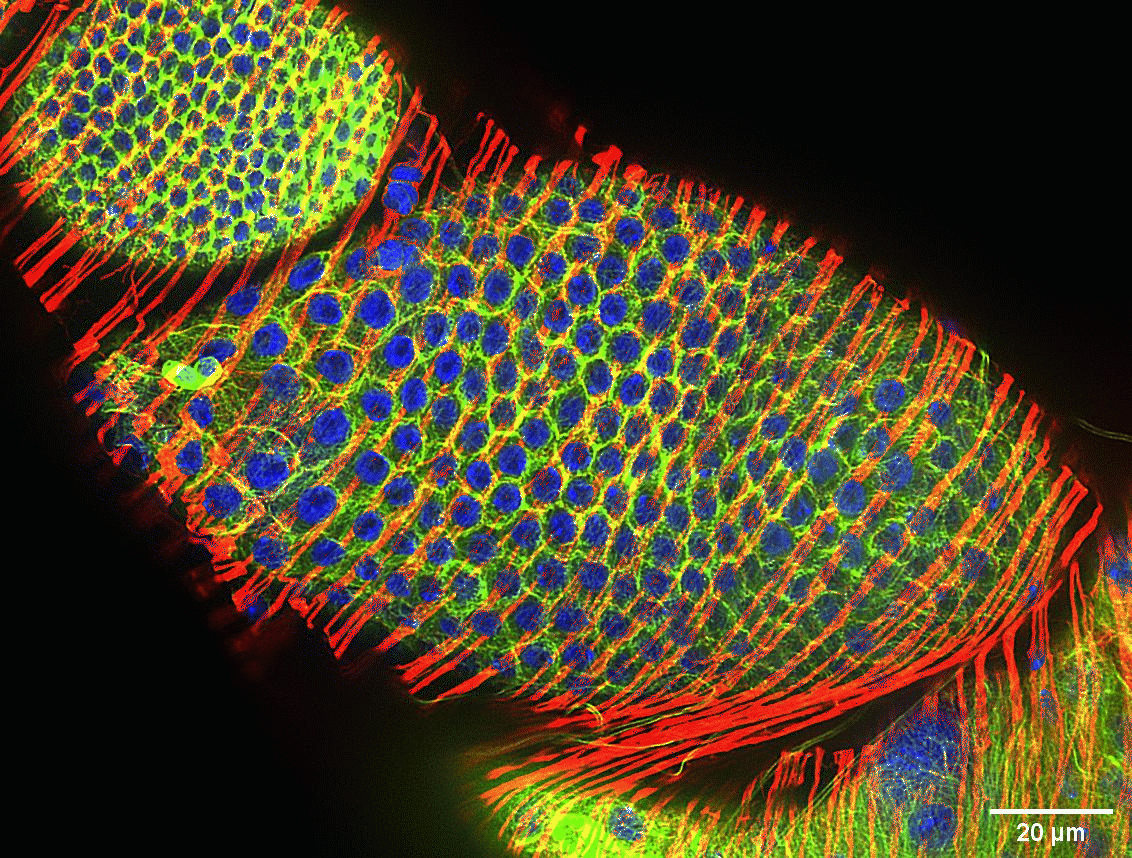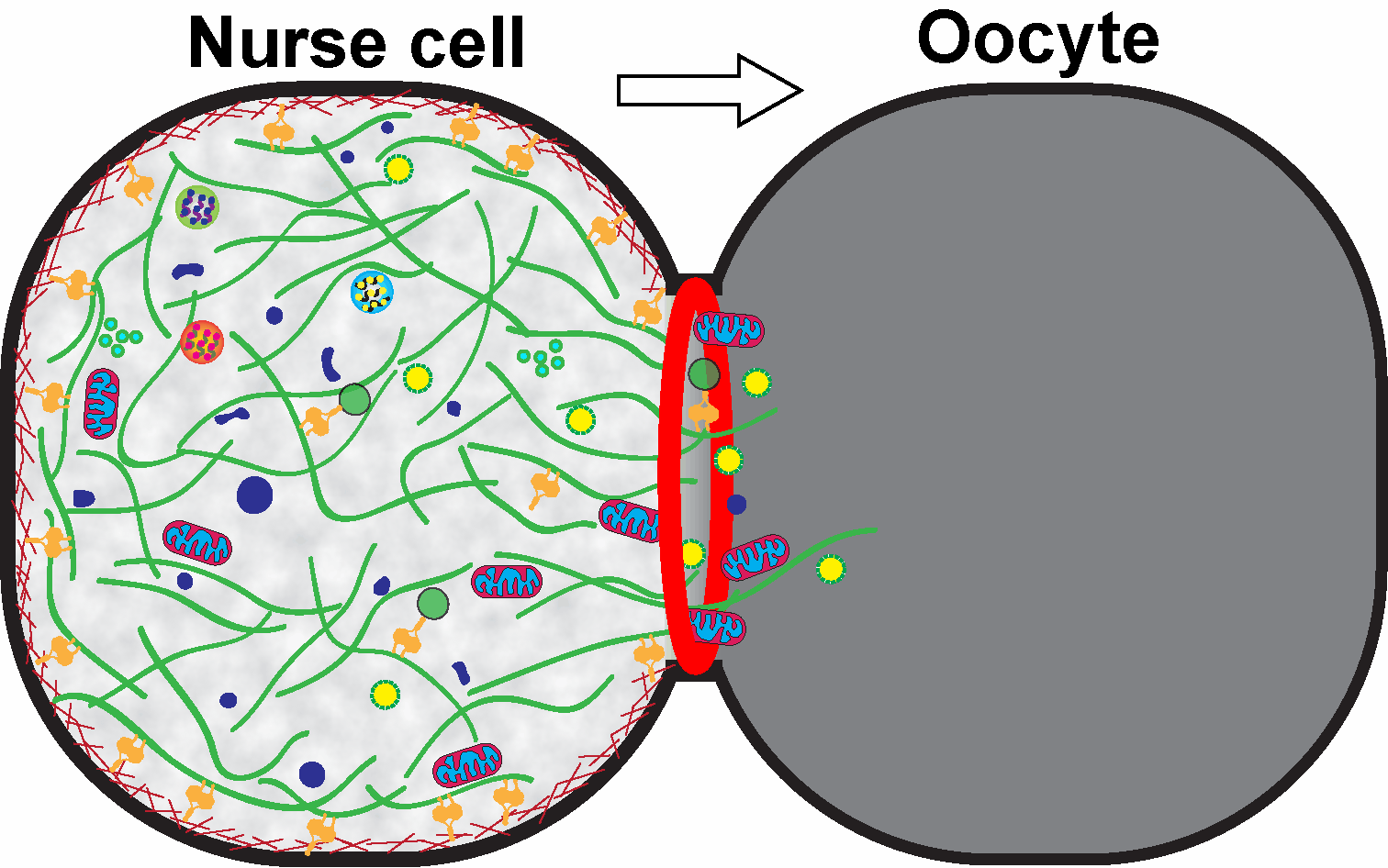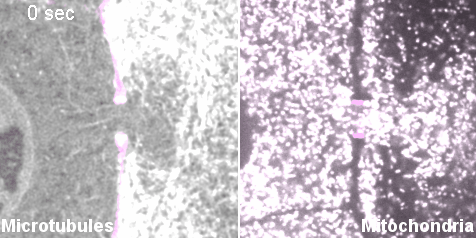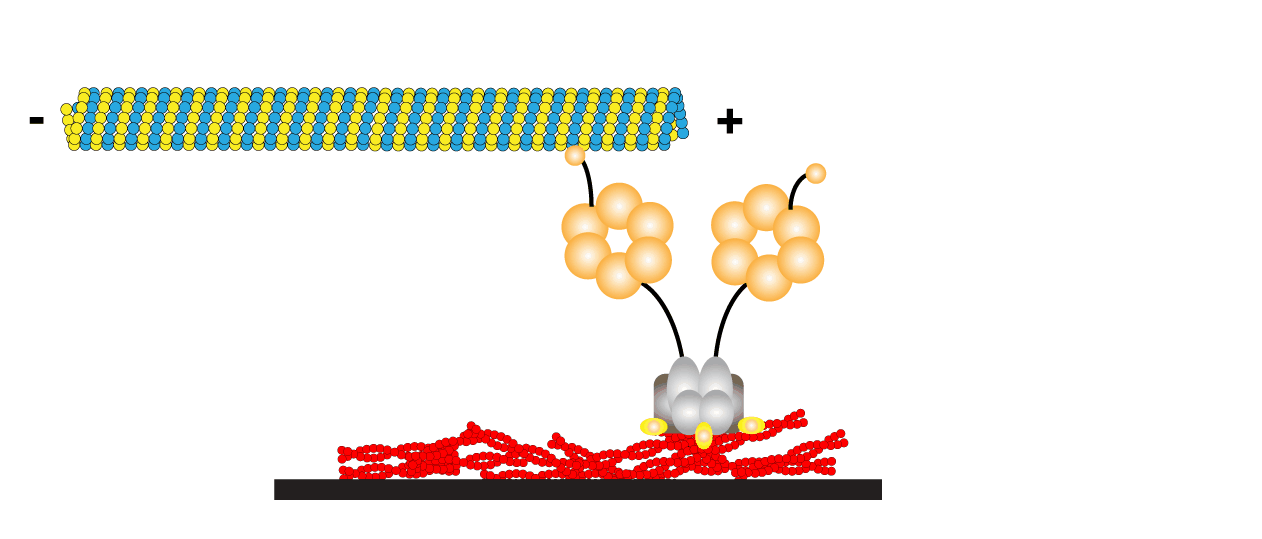Polarity determination
We study how molecular motors and cytoskeletal components polarize the largest cell of the animal, the oocyte, using the model organism, Drosophila melanogaster. The primary goal of our research is to decipher the molecular mechanisms underlying the synchronized cytoplasmic movement (ooplasmic streaming), posterior determination and oocyte transport/growth. We combine classic genetics and optogenetics with live imaging to study these processes in details. We have demonstrated that kinesin-driven microtubule sliding powers the ooplasmic streaming (Lu, Winding, et al., PNAS, 2016), which cooperates with cargo transport for posterior determination (Lu et al., JCB 2018). More recently, we show that competition between two motors, kinesin-1 and myosin-V, is essential for the initial posterior determination (Lu et al, BioRxiv, 2019). Currently, we are working to understand how the cargoes are transported from the interconnected nurse cells to the oocyte and how this contributes to the oocyte growth.












